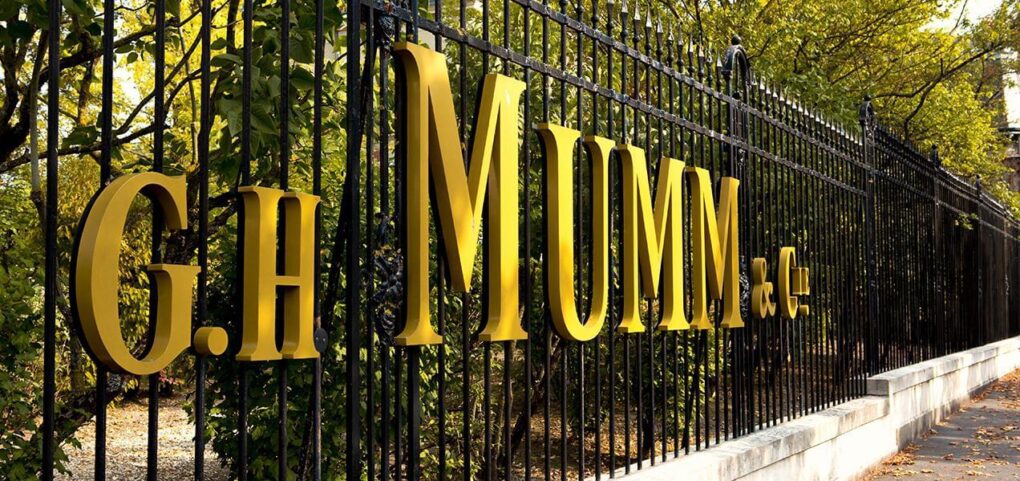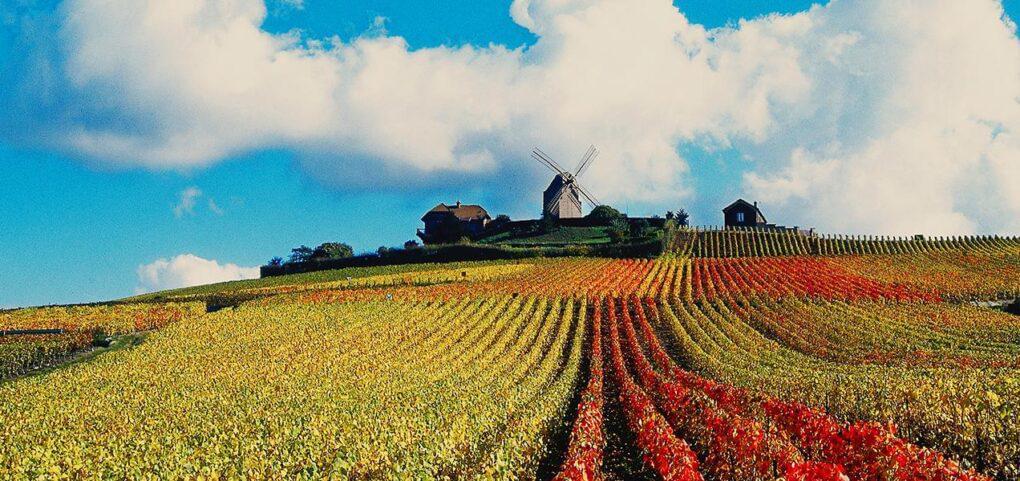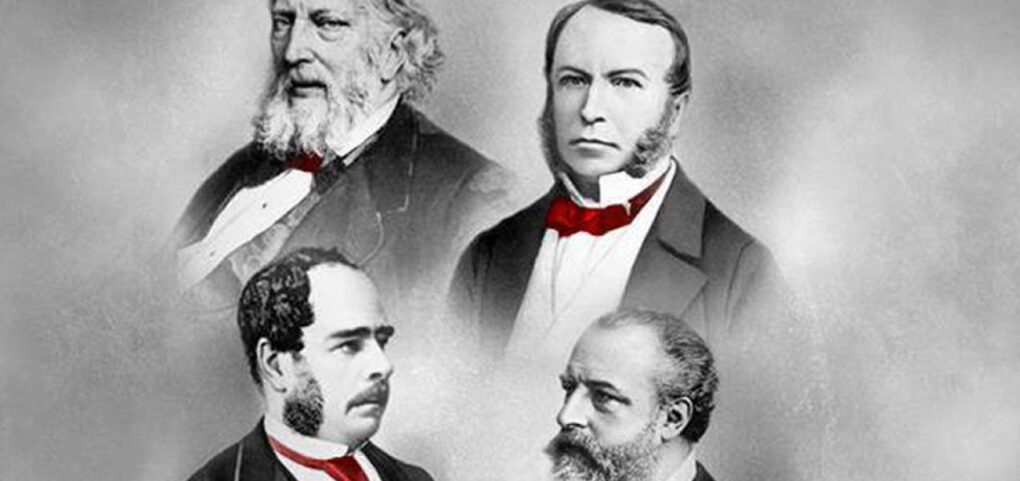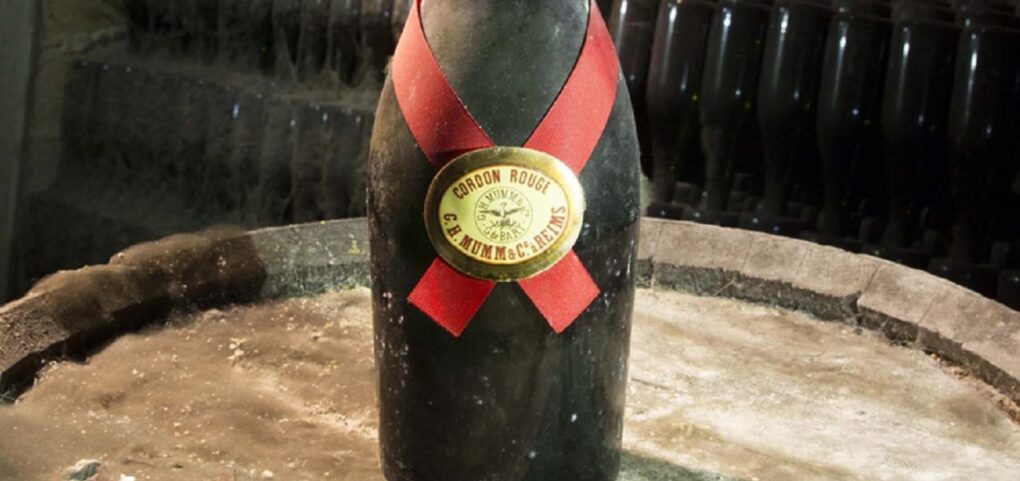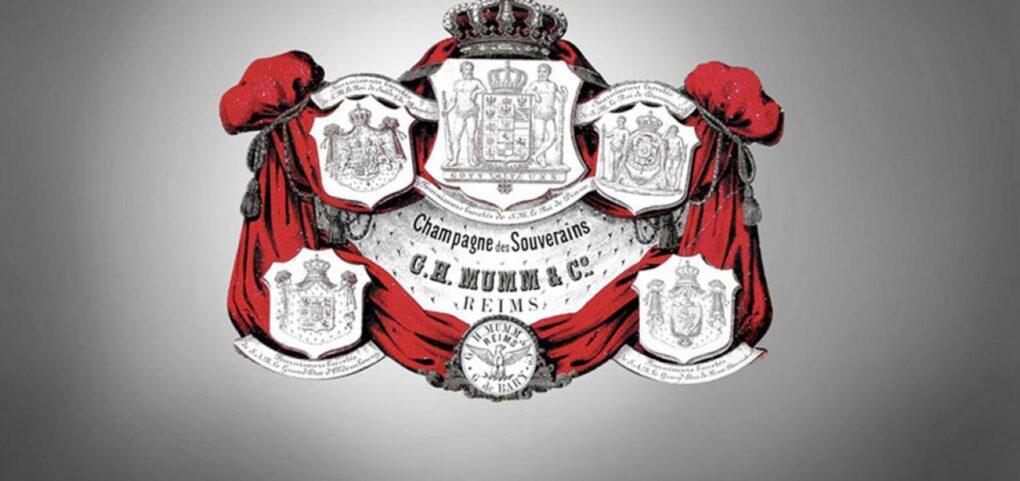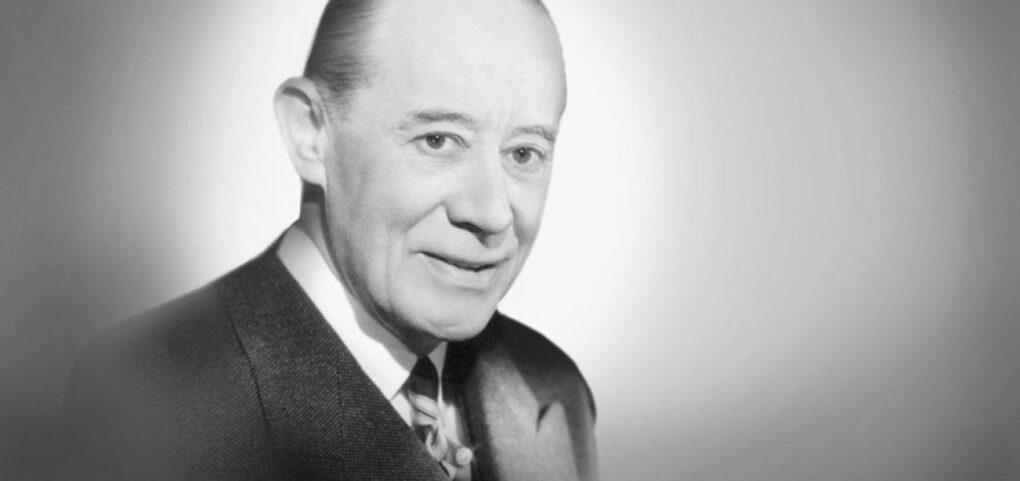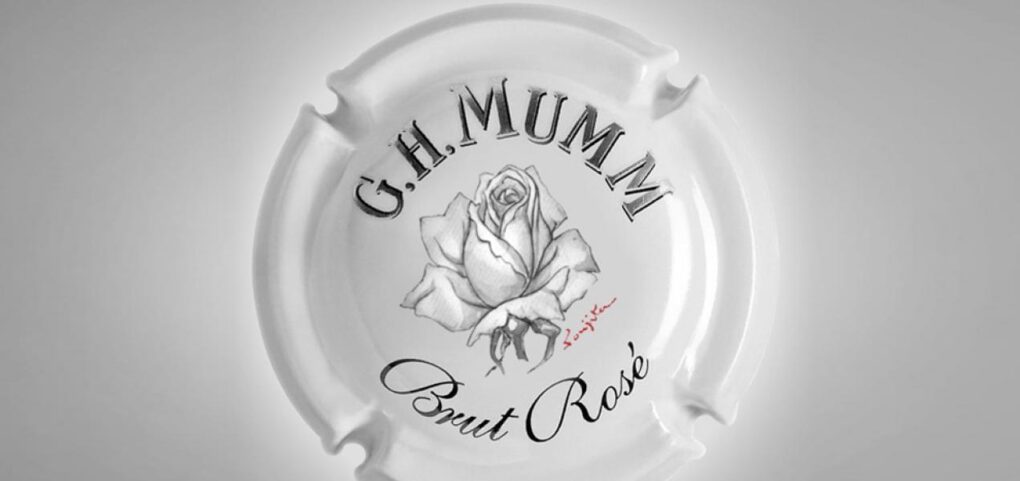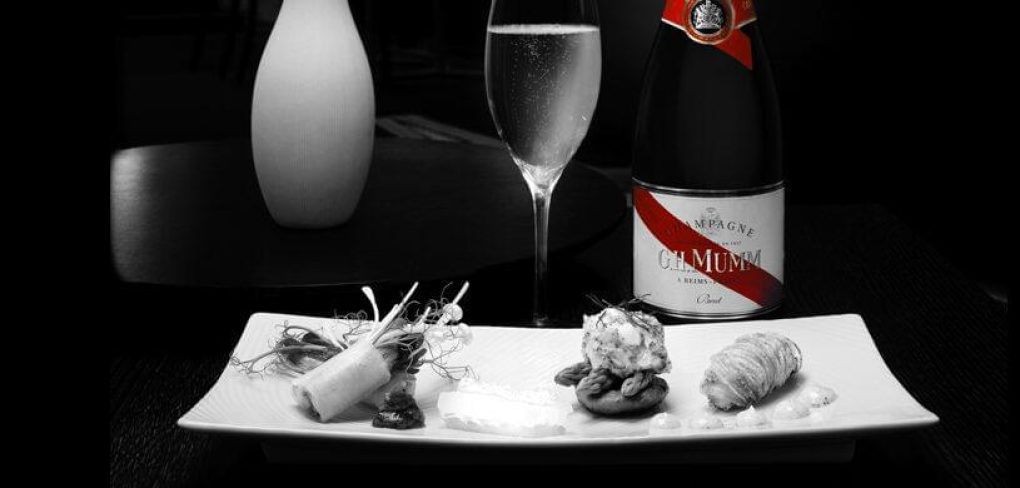Maison Mumm
Discover the history of an iconic champagne house.
1827
AT THE HEART OF CHAMPAGNE SINCE 1827
The first pages of the Maison MUMM fabled winemaking history were written long before 1827, its official founding date; the Mumm family, whose lineage includes barons and knights, dates back to the 12th century. Already in 1761, the family had launched a business as wine producers and merchants based in Cologne, Germany under the name “P.A.Mumm”, after its owner Peter Arnold Mumm. The company owned large vineyards in the Rhine valley, where it created its own wines.
In the early years of the 19th century, Peter Arnold Mumm’s three sons, Gottlieb, Jacobus and Philipp, recognised the sales potential of the outstanding sparkling wines produced in the Champagne region of France. As Germany and France enjoyed good relations at the time, the Mumm brothers made the bold decision to establish a new branch of the family company in the Champagne region, creating a branch office in Reims with the assistance of a local representative, G.Heuser.
From the outset, quality was the key watchword for the partners in this new entity formed in 1827, and it has remained so for all of their successors. This approach would be encapsulated in the motto penned by Georges Hermann Mumm: “Only the best”.
1840
TERROIRS AND CRUS
With their total area under vines rated at an impressive 98% on the champagne quality scale, Maison Mumm’s vineyards include 160 hectares classified as Grands Crus, and are situated in eight historic villages whose grapes express all of the authenticity of the Champagne region’s best terroirs: Aÿ, Bouzy, Ambonnay, Verzy, Verzenay, Mailly, Avize and Cramant.
Very early in its history, Maison Mumm realised the importance of establishing a system to ensure the highest quality, supervising every stage in production, from grape-growing practices in all its vineyards to the crucial pressing process.
The House demonstrated its capacity for innovation as well as its strong commitment to terroir – one that has never wavered through the centuries – by setting up its wine presses directly in the vineyards, an innovation symbolising its commitment to quality that continues to this day. Thus in 1840, when the company acquired its first parcels situated in Verzenay, a wine press was built and installed at the same time, which is still in use today.
Maison Mumm also introduced a supply policy that was unprecedented at the time: purchasing grapes directly from growers in the finest vineyards rather than unfermented juice. This approach allowed the company to verify grape quality and to press the juice itself. In this way, genuine partnerships were forged with growers, from whom the House demanded “only best”.
1852
THE MUMM DYNASTY
The von Mumms are one of Germany’s most ancient noble families, tracing their ancestry back to the medieval era. It was in the 18th century that their history first became linked to winemaking. In 1761, Peter Arnold Mumm decided to establish a business in Cologne as a wine producer and merchant. He transmitted his passion to his sons Jacobus, Gottlieb and Philipp, who, in turn, became pioneers in the emerging French champagne industry. Crossing the border, they set up operations in Reims, officially creating their champagne House in 1827.
In 1852, Georges Hermann Mumm, a son of one of the founders, took the reins of the company, which would henceforth be known as G.H.MUMM et Cie. In establishing the Mumm vineyards, he laid the foundations for a company strategy emphasising excellence. Open-minded and a defender of social progress, he instituted a system of prix de vertu and primes d’infortune, designed to provide economic assistance to workers disadvantaged due to age or disability.
Inspired by the initial adventure of the company’s founding fathers, Georges Hermann Mumm tirelessly travelled the globe, across Europe and as far away as Australia and New Zealand to market his champagnes. Already at the turn of the twentieth century, the company counted some twenty subsidiaries in the world’s main markets, including the United States, Russia and Canada, but also Brazil and Peru. Georges Hermann Mumm’s greatest creation was certainly the famous “Cordon Rouge”, first released in 1875.
Today, it remains the symbol of quality for the Maison MUMM. The Mumm family is also recognised for its receptiveness to new ideas as well as its appetite for challenges and includes a number of celebrated figures among its members, not only those in the winemaking field. For instance, the aviator Walther von Mumm, who took part in the first tests of two monoplanes alongside Louis Blériot. Walther von Mumm was also a champion bobsledder whose four-man team competed in the 1932 Winter Olympic Games.
1876
CORDON ROUGE: BIRTH OF AN ICON
In 1876, Georges Hermann Mumm made a decision that would shape the destiny of his champagne house. Paying tribute to his prestigious clients, he had the neck of every bottle of his Cuvée Brut decorated with a red silk ribbon. This decoration was inspired by the red sashes bestowed upon those distinguished individuals receiving the highest of French honours, the Ordre Royal et Militaire de Saint Louis and the Grand Cordon de la Légion d’Honneur.
Beyond the visual strength of the Cordon Rouge, this decision firmly established Maison MUMM as an ambassador of the Champagne spirit, in due recognition of its accomplishments. Featured in the works of early 20th-century poster artists as well as in the pages of Hergé’s famous comic series chronicling the adventures of the intrepid boy reporter Tintin, MUMM Cordon Rouge also appears in paintings by Utrillo and Foujita and even pops up in the movies. MUMM Cordon Rouge has often been the choice of leading personalities when dining out or celebrating, and remains closely linked with the creations of prized chefs.
1900
THE “CHAMPAGNE DES SOUVERAINS”
Illustrious royal families across Europe, including those of Austria-Hungary, Belgium, the Netherlands, Prussia, Denmark, Sweden and Norway, were captivated by the Maison MUMM style.
Named as an official supplier of champagne to British royalty in 1904, MUMM first gained pride of place at the Derby Day banquet served in Buckingham Palace that year. Commemorating this honour, the House prepared a special label, with the phrase “G.H.MUMM et Co., Champagne des Souverains” and displaying the coats of arms of its most eminent clients.
To this day, Maison MUMM remains an official supplier of champagne to Her Majesty Queen Elizabeth II, as evidenced by the Royal Warrant decorating the neck of its bottles.
In 1900, when Cordon Rouge was introduced to the English market, the slogan used was “the most expensive, therefore the best”. The Maison MUMM has always sold its champagnes at relatively high prices. When Maison MUMM was founded in 1827, there were champagnes available on the French market for 2.75 francs wholesale, whereas the new company sold its product for 3.50 francs.
This is the price paid for higher quality. Resolutely orientated to the export market, the House saw its sales rise from half a million bottles in 1879 to three million in 1913, which made it the leading champagne house at the time.
1920
RENÉ LALOU, THE VISIONARY
It was in 1920 that René Lalou became a member of Mumm’s Board of Directors. For this visionary, terroir and quality were seen as central to the company’s ongoing development. Launching a full-scale reorganisation of the company’s vineyards, he lovingly re-established mythical parcels and acquired additional Grand Cru vineyards. At the helm of G.H.Mumm for nearly fifty years, he was the key driving force behind the company’s development in the 20th century. It is impossible to speak of René Lalou without talking about art. An enlightened aesthete and patron, he personally linked G.H.Mumm’s history to that of 20th-century painting. Prominent artists would lend their talents to lasting creations for the brand, including the painters Utrillo and Foujita.
His philosophy can be summed up in the famous motto of Georges Hermann Mumm, which he blazoned on all of the company’s contracts: “Only the best.”
Cuvée Réné Lalou was created in honour of this great man’s exceptional legacy. There were only nine vintages of this treasured champagne, produced between 1966 and 1985. So prized are these bottles that they regularly reach steep prices at wine collectors’ auctions, although a small number of the world’s finest restaurants still offer Cuvée René Lalou on their menus.
In 2007, the Cellar Master decided to bring this mythical champagne back to life, thus offering his own tribute to this important figure, with Cuvée R. Lalou 1998. Exceptional in every way, this cuvée was produced from the same grape varieties, grown on the same parcels, as those of its celebrated ancestor. It was followed by a 1999 vintage. The legend continues…
1957
LEONARD FOUJITA’S ROSE
Each bottle of Mumm Brut Rosé reveals a genuine work of art: the rose that embellishes the cap covering the top of its cork, signed by the Japanese painter Léonard Foujita, who eventually made his home in France.
Arriving in Paris for the first time in 1913, Foujita quickly befriended Picasso and Apollinaire and would become one of the most popular artists in France between the wars. Following a nomadic period, he settled definitively in his adopted country in the early 1950s.
In 1957, René Lalou, President of Maison Mumm, was looking for a symbol to reinforce the image of its champagne rosé. An avid art collector, he asked Foujita to work on an idea, which the artist presented in the form of a watercolour. “Léonard Foujita’s Rose” had just been born.
This rose would seal the bond of friendship that already existed between the two men. Foujita converted to Christianity and was baptised at Notre-Dame de Reims, with Lalou as his godfather, who then offered him a plot of land in Reims, near the Maison Mumm. The artist had a chapel built on the property, which he designed and decorated himself. This exceptional site may still be visited today.
2009
AT THE TABLES OF GREAT CHEFS
“Only the best.” Georges Hermann Mumm’s motto could certainly also be that of the greatest chefs of today and yesterday. This shared mindset goes a long way to explaining the strength of the bond uniting Mumm’s champagnes and haute cuisine.
It is a relationship that has been nurtured over the years, as evidenced by the bottles produced by Mumm in the 19th century, personalised for leading restaurants and hotels. Even at that time, Mumm’s champagnes were regularly mentioned in publications featuring the views of leading arbiters of taste, which included the menus of receptions attended by society’s crème de la crème. The brand also maintained excellent relationships with the period’s prominent professional gourmet associations.
Mindful of the importance of this heritage, since 2009 Mumm have organised “Menus de Légende”, an unequalled annual gastronomic event associating champagne and haute cuisine. For the 2011 edition, several Michelin-starred chefs, including Jean-Pierre Vigato, Paul Bocuse and Michel Sarran, were invited to reinterpret the menus of four of their illustrious predecessors: François Vatel, Antonin Carême, Auguste Escoffier and Fernand Point. Each chef thus gave the creations of these gastronomic geniuses a second lease of life, in full harmony with Mumm’s champagnes.
